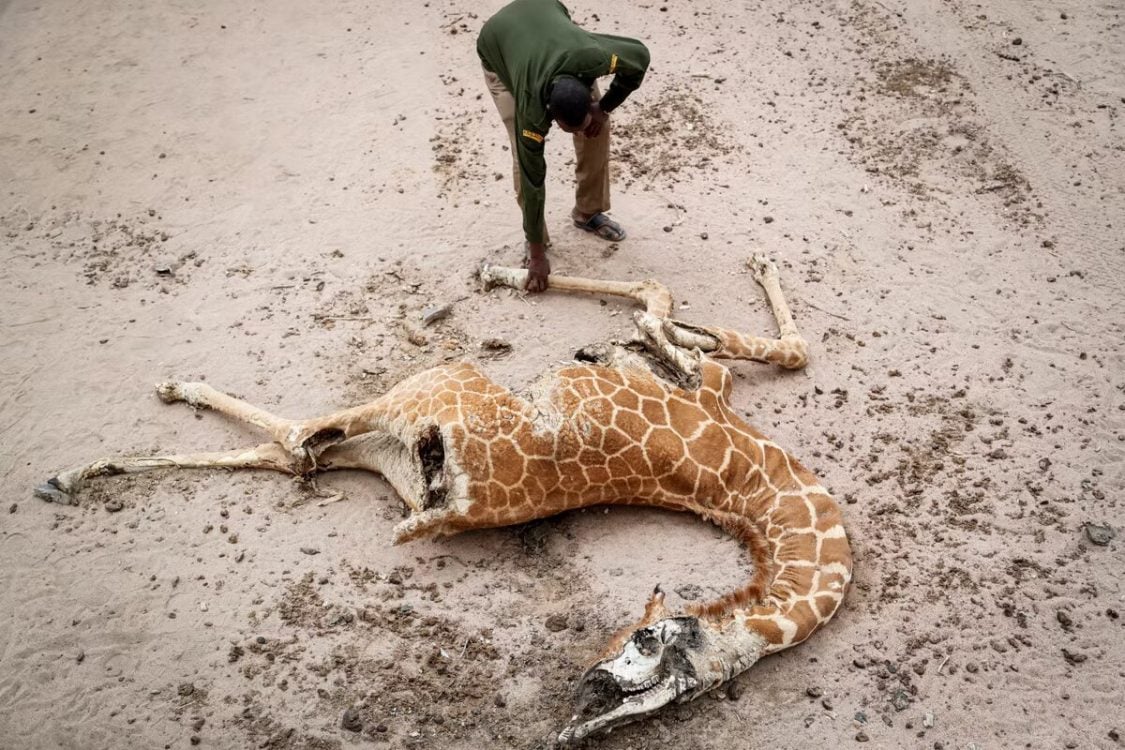Crisis as worst drought in 40 years kills wildlife
By Bernard.Gitau, October 18, 2022Wildlife, Kenya’s heritage is being decimated by the worst drought in 40 years.
In most of the over 40 National Parks and Reserves in the country, dead animals’ litters all over.
“In Amboseli National Park, tourists are forced to wear face masks due to the strong stench of decomposing wildlife,” Benson Leyian, CEO of Big Life said.
At the park which is the homestead of over 1,800 elephants, at least 21 have died in the last two months. “We are losing wildlife at an alarming rate. We have lost 15 baby elephants and 6 adults in a span of two months and this number is high considering the period of drought,” said a senior officer at the park who sought anonymity as he is not authorised to speak to the media.
In July this year outgoing Tourism Cabinet Secretary Najib Balala said 78 elephants from the Tsavo National Park had died due to the drought experienced in the conservancy. Driving across the park, the death field is around the Ol Tukai area where carcasses of wildebeest, elands, zebras, buffaloes among others are strewn all over.
Water in the park is in plenty but lack of pasture is the cause of deaths.
Devastating impact
At the watering points, weak wildlife dying or dead after sticking in the mud is a heart-breaking scene for tourists.
Few kilometres from Amboseli National Park, the devastating impact of drought at Kimana Sanctuary is evident with officials claiming the situation will be out of hand sooner than later. “If it does not rain in the next two to three weeks, my estimation is we will lose over 50 to 60 percent of the livestock and wildlife population,” said Leyian.
Leyian said at least 50 elephants have died or are missing from the Sanctuary.
“We have airlifted over 10 young ones of the elephants to various orphanages like Sheldrick Wildlife Orphanage,” he said.
With the high number of elephants’ death, conservationists are worried of backtracking on the gain the country has achieved of stabilizing the number of elephants in recent years by curbing poaching. At the sanctuary, the hardest hit animals are Maasai giraffes, warthogs, elands, zebras among others.
Samuel Ole Sambu, community liaison officer with Big Life indicates human wildlife conflict is at its highest level saying the last three failed rainy seasons have adversely affected local communities.
Sambu decried that they are torn between providing water to livestock, people or wildlife. “Wildlife like elephants are going to villages in search of water and pasture but fortunately no deaths have been recorded, only destruction of properties,” said Sambu.
Susan Kaeka, a resident of Kimana said the drought has brought tolerance between wildlife and humans. “We have not experienced any death or attack because we pave way for wildlife to drink water then we proceed to fetch or wash clothes,” said Kaeka.
She added the only challenge they are experiencing is destruction of water pipes, tanks, fences among other infrastructure by elephants.
Sambu said the drought has been worsened by overgrazing with thousands of livestock from Tanzania crossing over to Kenya, pastoralists’ failure to adhere to proper grazing management of paddocking.
Costly affair
To avert more deaths, Big Life is working on a framework to feed the wildlife with hay and pellets. “The research is ongoing on the best way to feed the wildlife and we appeal for the government and donors to support us because feeding wildlife is a costly affair,” Leyian said.
Leyian said apart from feeding wildlife, Big Life is supporting over 29,000 school going children through a feeding programme in Amboseli Ecosystem.
According to the Wildlife Census 2021 Report, Kenya had 36,280 elephants, 897 black rhinos, 842 white rhinos, two northern rhinos, 2,589 lions, 5,189 hyenas and 1,160 cheetahs.
According to Save the Elephants organization, in northern Kenya, where their research camp is based, the wild animals are scrambling for food in a landscape that resembles a desert wasteland.
Due to its adverse effect, Union of Veterinary Practitioners, Kenya Chair Benson Kibore has urged President William Ruto to declare drought a national disaster.
“In the past 3 weeks, the country has lost half of the Livestock population in ASAL Counties. Our professionals have been stretched to a state of fatigue. The help to Livestock and people is trickling very slowly,” said Kibore.
